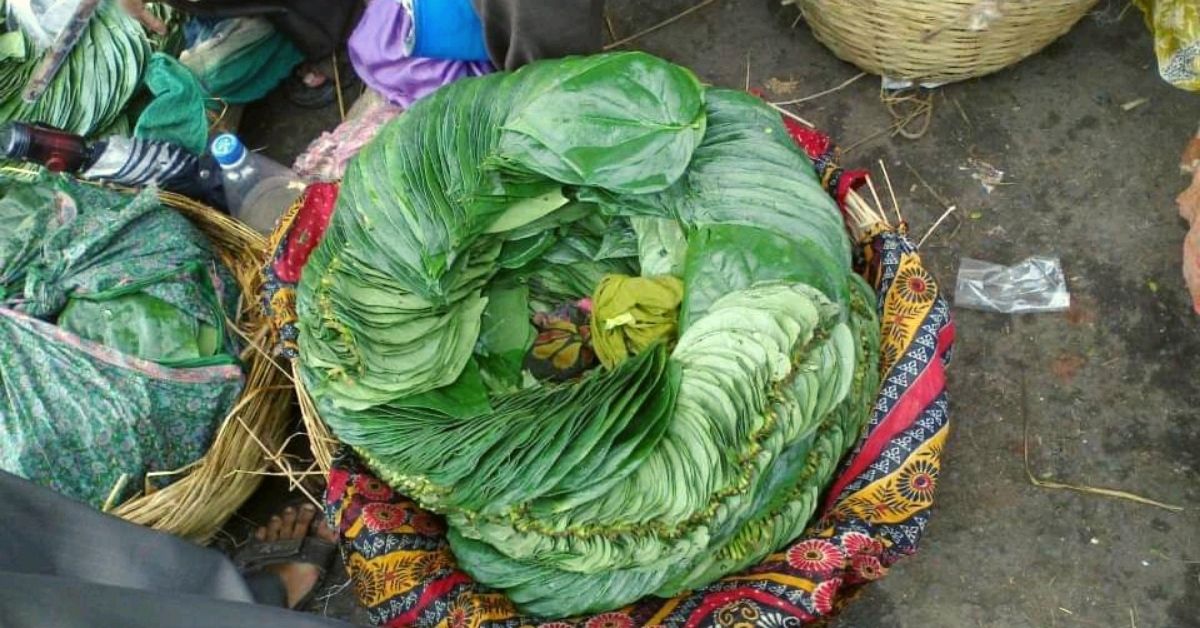A constant starter before thakurma’s (grandma) evening story-telling sessions, or a must-have after dessert in a traditional Indian wedding, Paan or betel leaf has been an inseparable part of India’s cultural and culinary fabric.
Originating from the Sanskrit work, ‘Parna’ which translates to ‘leaf’, Paan finds mention in Indian mythology as well as Ayurveda, for its medicinal properties. The heart-shaped betel leaf (Piper Betle) with reticulate venation has been used in India in various religious ceremonies as well as daily consumption for over 5000 years.
But it is more than a delicious bite or a palette cleaner– it is a wonder leaf packed with health benefits.
Although in several traditions, it is often consumed with slaked lime, supari or areca nut along with or without tobacco, and has been often associated with the risk of oral cancer, it is important to note that there are other ways of consuming the leaf that has several benefits, including anti-inflammatory and anti-microbial properties among others.
Healthy heart-shaped wonder

While betel leaves are known to be rich in nutrients like thiamine, niacin, riboflavin, vitamin C, carotene and calcium, its consumption in limited quantities does not make it a big contributor of nutrients in a traditional Indian diet.
Instead, it is the other non-nutrient components that make Paan so valuable.
These consist of antioxidants, anti-inflammatory compounds along with anti-microbial and anti-diabetic properties. It is also said to be instrumental in preventing cardio-vascular disease, high blood pressure and high cholesterol.
Mentioned in traditional medicine and proven in several modern studies, it is said to be highly beneficial for treating wounds and inflammation.
According to Ena Ray Banerjee, from University of Calcutta’s Immunology and Regenerative Medicine Research Laboratory, the existing conflict around the effects of paan exists because of the generalisation of paan as one variety.
While some varieties can cause harm in the long run, others are beneficial, says the scientist. In a research, scientists at University of Calcutta and Indian Institute of Chemical Biology, examined nine varieties of betel leaf and identified those that have anti-inflammatory properties.
As per their findings, out of the nine varieties, five showed anti-inflammatory properties while one depicted the tendency to cause inflammation, and the remaining revealed insignificant results.
Additionally, it is also known to be an excellent analgesic that provides relief from pain, in case of any cuts, bruises or rashes. One can make a paste of the tender betel leaves and apply over the wound and leave it bandaged to heal.
It is said to accelerate the healing process. The same process of application can be also used to help with severe headaches.
In several ancient Ayurvedic texts, betel leaf juice is also recommended for consumption to provide relief from internal pains in the body.
Another prominent benefit of betel leaves include weight loss. It is said to reduce Medha dhatu or body fat and increase metabolic rate of the body. A powerhouse of antioxidants that is known to clear radicals from the body, betel leaves restore the normal PH levels and help ease an upset stomach.
This is also one of the reasons why an Indian traditional meal often ends with chewing on a beter leaf. It’s carminative, intestinal and anti-flatulent properties help in improving gut health while stimulating the intestines to absorb important nutrients.
(Edited by Vinayak Hegde)
No comments:
Post a Comment